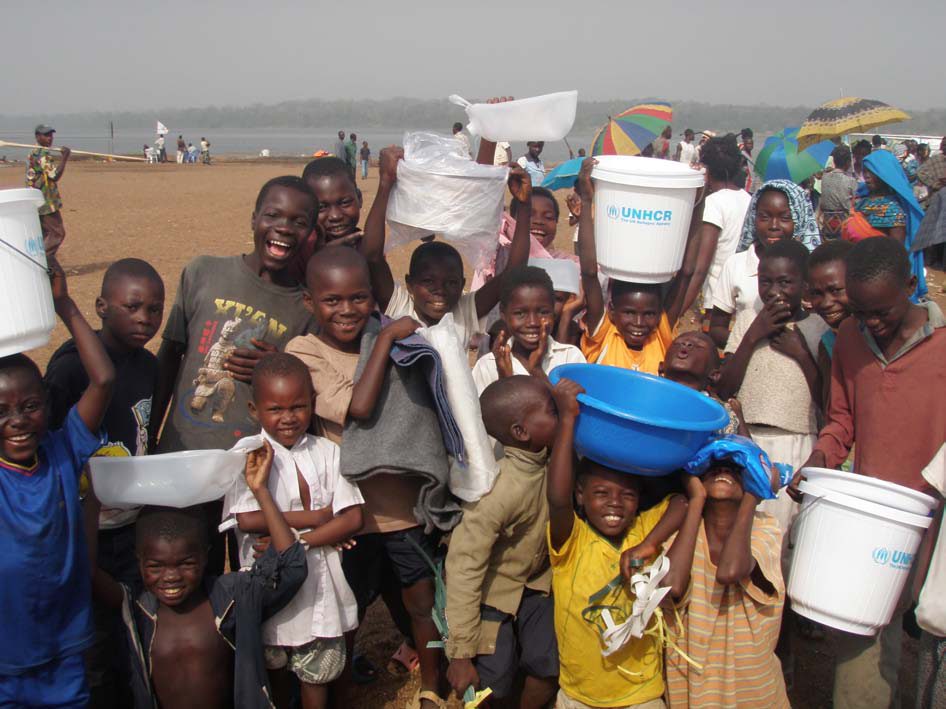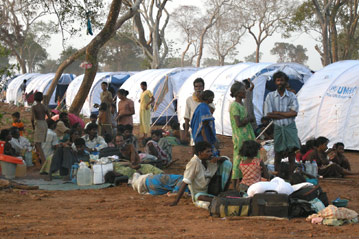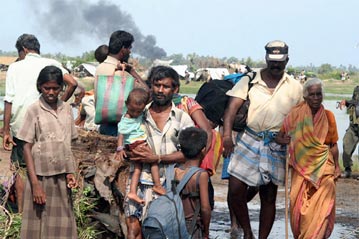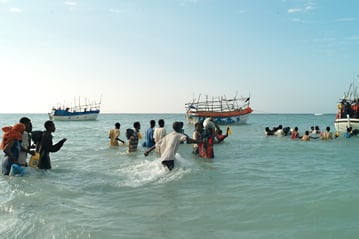Lubbers visits Iran camp sites for Iraqis; UNHCR stockpiles relief aid in region
Lubbers visits Iran camp sites for Iraqis; UNHCR stockpiles relief aid in region
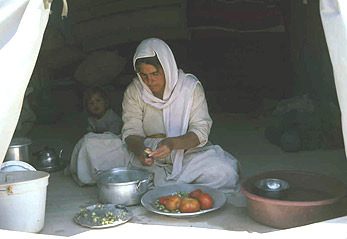
AHWAZ, Iran, March 6 (UNHCR) - The United Nations High Commissioner for Refugees, Ruud Lubbers, today visited camp sites being prepared for a possible Iraqi refugee influx, while Iranian aid officials stressed that they will not be able to cope without international assistance.
On his second day in Iran, Lubbers flew to the Khuzistan province capital of Ahwaz and drove to refugee camps being prepared along the border in the event that war breaks out in Iraq. Bulldozers were levelling land in the middle of a desert and pit latrines were being dug, but officials said more needs to be done to bring in water and electricity, and to build access roads. They added that the government was experiencing economic difficulties.
"We are not prepared to spend a single penny for the refugees," said Ahmed Hosseini, head of Iran's Bureau for Aliens and Foreign Immigrants (BAFIA). "We are in a situation where war will probably break out in two weeks. What do you expect us to do without international support?" He said his agency needs $11 million for initial preparations.
Lubbers said UNHCR was prepared to complement funding for the preparations, but added that few contributions were forthcoming because donors were hoping that the war would be averted. The refugee agency has so far received only $16.6 million of the $60 million required to meet the needs of an anticipated influx of 600,000 Iraqis in the region, while also borrowing another $16 million that must be repaid. UNHCR has so far spent $25 million on its Iraq contingency operations.
Before leaving Ahwaz, Lubbers visited Red Crescent Society and UNHCR warehouses being stocked with relief aid for possible new Iraqi refugees. National Red Crescent societies throughout the Middle East are working to rapidly establish stocks of relief aid. In addition, UNHCR has items for 180,000 people already stockpiled in Iran, Jordan and Turkey, and expects to have supplies sufficient for more than 300,000 people available by the end of March.
The High Commissioner flew into Tehran Wednesday on the last leg of a 10-day trip to Afghanistan, Pakistan and Iran - his fourth since taking over UNHCR in 2001.
Iranian President Mohammed Khatami told Lubbers shortly after his arrival that Iran was prepared to stand by its humanitarian commitments, but stressed that he expected the international community to help. In later meetings with the Iranian Foreign Affairs Minister and the Interior Minister, Lubbers was told that Iraqi refugees would only be allowed to enter the country in an extreme emergency. Both ministers also echoed the need for financial assistance.
Lubbers said he hoped that despite the difficulties, the Iranian government will do its best to be prepared. "We will do our utmost to complement the government's efforts and share the burden if we receive support from the international community," he said.
Iran already shelters more than half the world's 400,000 recognised Iraqi refugees, including some 48,000 in 22 camps in the west of the country. Another 2 million Afghans also live in Iran. More than 400,000 have returned to Afghanistan in the last year, including over 262,000 under a repatriation initiative jointly facilitated by UNHCR and the Iranian government.

